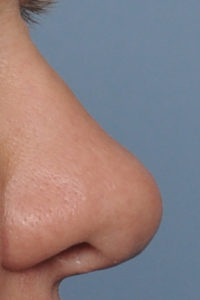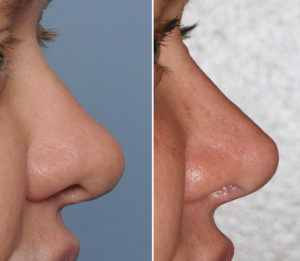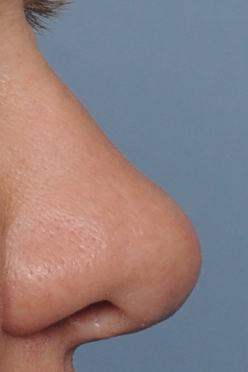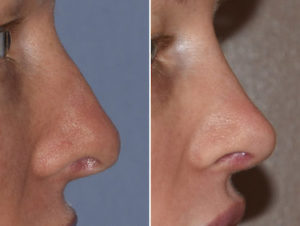
The cause of a postoperative pollybeak deformity is multifactorial. Excessive scarring, lack of adequate tip support and a high remaining septal angle are the most common reasons. Lack of tip support can be avoided by the use of a columellar strut graft and avoiding excessive weakening of the lower alar cartilages by over resection. Inadequate resection of the septal angle as the dorsum is reduced is an underlying cause beneath the tip that can cause it to protrude outward as the swelling subsides. The thick skinned nose and the nose that congenitally lacks good tip projection is particularly prone to this problem with the development of a profound scar reaction in the supratip area.
In the April 2020 issue of the journal Plastic and Reconstructive Surgery an article was published on this topic entitled ‘Rhinoplasty Refinements: Addressing the Pollybeak Deformity’. In this paper the authors provide a case study of a secondary rhinoplasty to address multiple concerns one of which is a pollybeak deformity. An open rhinoplasty approach was used with scar tissue removal over the dorsum. Increased tip support and septal cartilage grafting helped resolve the supratip shape and deviated nose issues.

Obliteration of any dead space between the overlying skin and the underlying cartilage in the supra tip area is also important to decrease scar tissue. Adequate taping and the overlying splint can help in that regard. Another technique is advancement suturing of the nasal soft tissue is also another technique.
Dr. Barry Eppley
Indianapolis, Indiana




